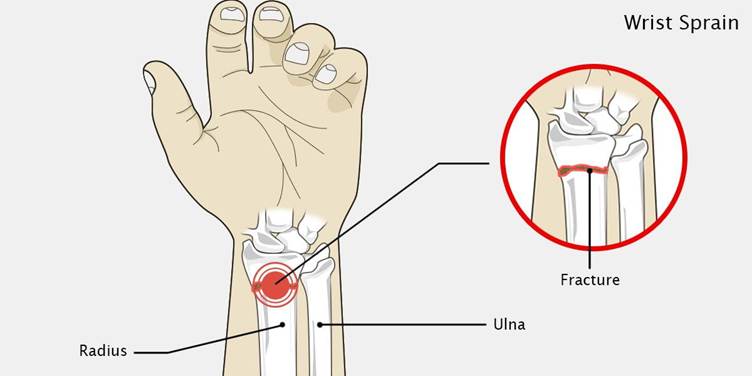A wrist sprain can occur when the ligaments in your wrist are stretched or torn, usually due to a fall, sudden twist, or impact. While severe sprains need medical attention, mild wrist sprains can often be treated effectively at home. With the right approach, you can reduce pain, swelling, and promote healing without stepping into a clinic.
What Is a Mild Wrist Sprain?
A mild wrist sprain is a Grade 1 injury where the ligaments are stretched but not torn. It typically causes minor swelling, tenderness, and stiffness but doesn’t involve joint instability or serious damage.
Common Causes
- Falling on an outstretched hand
- Twisting the wrist during sports or daily activities
- Lifting heavy objects improperly
- Sudden impacts or jerks
Symptoms of a Mild Sprain
- Swelling around the wrist
- Mild to moderate pain, especially when moving the wrist
- Bruising or discoloration
- Stiffness and reduced range of motion
- Tenderness to touch
Home Remedies That Actually Help
1. R.I.C.E. Method
The first line of treatment for mild sprains:
- Rest: Avoid any activity that strains the wrist for at least 48 hours.
- Ice: Apply an ice pack for 15–20 minutes every 2–3 hours during the first 48 hours.
- Compression: Use an elastic bandage to wrap the wrist, but not too tightly.
- Elevation: Keep your wrist elevated above heart level to reduce swelling.
2. Over-the-Counter Pain Relief
Use NSAIDs like ibuprofen or paracetamol to relieve pain and reduce inflammation. Avoid prolonged use without consulting a doctor.
3. Gentle Stretches & Exercises
After a couple of days, begin light mobility exercises to prevent stiffness:
- Wrist circles
- Flex and extend the wrist slowly
- Ball squeeze exercises
Note: Only start exercises if there’s no pain while moving.
4. Natural Remedies
- Turmeric paste: Apply a paste of turmeric and warm water to the area. It has anti-inflammatory properties.
- Epsom salt soak: Soak your wrist in warm water mixed with Epsom salt to ease soreness.
- Aloe Vera Gel: Has soothing properties that help with inflammation and healing.
5. Support with a Brace or Splint
Using a wrist brace temporarily helps keep the wrist stable and protects it from further injury. Remove it during gentle exercises to maintain mobility.
Avoid These Mistakes
- Don’t massage aggressively in the early stage—it can worsen inflammation.
- Don’t ignore pain. Mild pain can still indicate a deeper issue if persistent.
- Don’t resume strenuous activities too soon.
Conclusion
A mild wrist sprain can be managed well at home if treated early and carefully. Always listen to your body—if the pain worsens, swelling increases, or movement becomes difficult, seek medical advice promptly. Home care is powerful, but knowing when to escalate to a doctor is just as important.
Disclaimer: This article is intended for general informational purposes and should not be used as a substitute for professional medical advice. Always consult with a healthcare provider for your specific condition.
